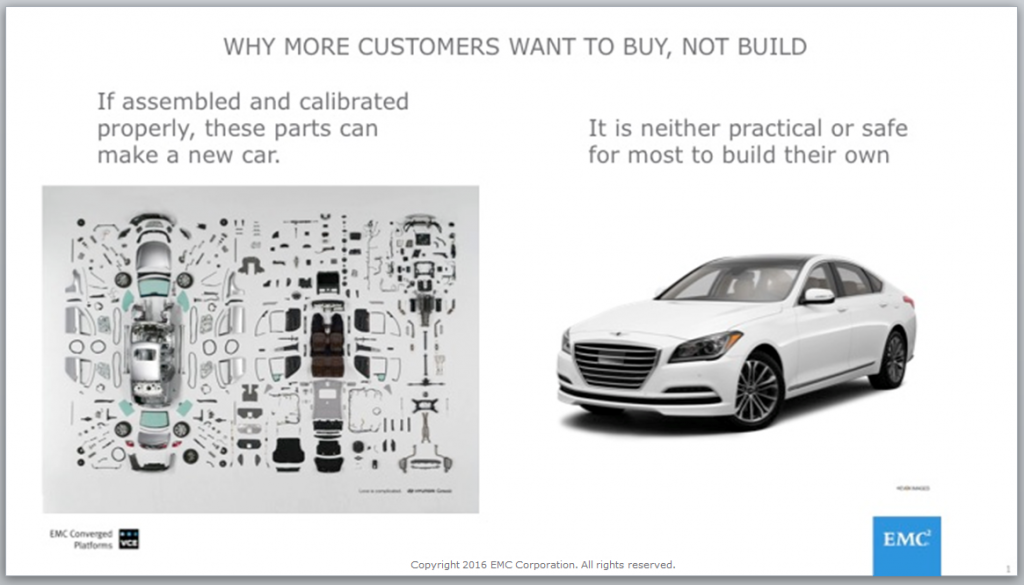IT decision makers are increasingly asking the simple question, “Why build what you can buy?” as they seek to modernize data center environments. For many, this means a shift of some workloads to public cloud offerings, and a thoughtful IT transformation path for on-premise infrastructure. With a broad portfolio of converged and hyper-converged infrastructure platforms – VCE Vblock, VxBlock and VxRack Systems, and VxRail Appliances – EMC enables customers to optimize a hybrid cloud to achieve better business outcomes. Today I am pleased to announce the availability of a new study conducted by Forrester Consulting, commissioned by VCE, the Converged Platforms Division of EMC. This study provides insight on how customers can evaluate converged or hyper-converged infrastructure from financial and business perspectives.
Forrester’s Total Economic Impact™ report* offers practical, real-world tips for deploying converged infrastructure, informative details on the wide-reaching benefits of convergence for the entire business, and a worksheet that IT leaders can use to calculate the estimated total value converged and hyper-converged infrastructure can deliver for the unique needs of their organization. Time constrained CIOs who want a practical versus an exhaustive way to effectively evaluate the benefits of converged infrastructure will appreciate the guidance and actionable suggestions in this report. Key steps to take include:
- Identify priorities
Articulate business objectives that the cloud solution will help achieve. Then look at additional technology objectives, such as a desire to consolidate infrastructure or eliminate rogue IT. Also consider what other initiatives — both IT and business — are underway that need to be supported in the private or hybrid cloud. - Define scope
Is an initiative being used as a catalyst for overall operational change within the IT organization? Does the IT organization have the depth and control necessary to achieve this, or must other parts of the organization be leveraged? What are reasonable timelines? - Define budget, including opex vs. capex
This should be done as part of an overall cost benefit analysis. Understanding what budget is available for both capex and opex is important before going through a future, more detailed evaluation and selection effort. - Develop a short-term plan for rapid modernization
It is important to set early-stage goals and quick wins. This contributes to the ROI of the project and gives the IT and business organizations the proof points needed to continue down the path. - Maintain a long-term vision for continued success
It is important to tie the long-term vision back to the business objectives. A business case around this vision should be built. An important consideration is future flexibility, since these are still early days in the world of cloud computing, and many future initiatives will be built on top of this, such as big data and machine learning; tighter collaboration with customers, suppliers, and partners; emerging technologies; and new business directions.

Forrester interviewed organizations that implemented VCE converged platform solutions. While they faced different challenges and situations unique to their sector, Forrester found that the surveyed organizations experienced quantifiable benefits of modernizing their infrastructure:
- Increased Application Development
- Infrastructure Cost Avoidance
- IT Operational Efficiency Increase
- Business Productivity Increase
- Security and Compliance Cost Reduction
At EMC, our converged platforms mission is to break down the silos in the data center and help businesses usher in a new era in simplicity for IT infrastructure. Use this guide from Forrester Consulting to help you embark on modernizing your data center.
*Source: A Forrester Total Economic Impact™ Report Commissioned By VCE, “A Practical Guide for Evaluating the Value of VCE Converged Infrastructure for Data Center Modernization” March 2016